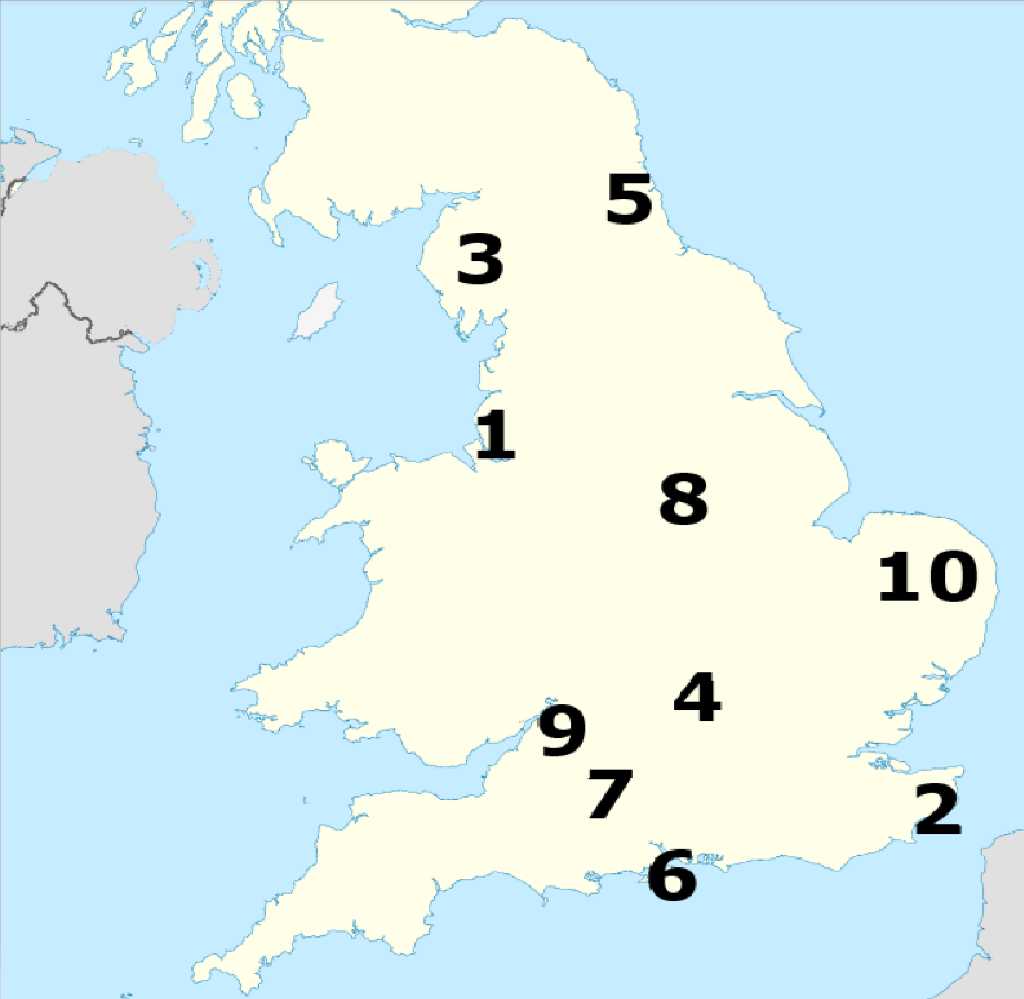
Exploring England! Trivia Quiz
Grab your map and head off to England in the British Isles for a sightseeing tour of landmarks, cities, and key regions. Identify where these ten spots are if you can. Good luck!
A label quiz
by kyleisalive.
Estimated time: 3 mins.
- Home
- »
- Quizzes
- »
- Geography Trivia
- »
- Europe
- »
- England
